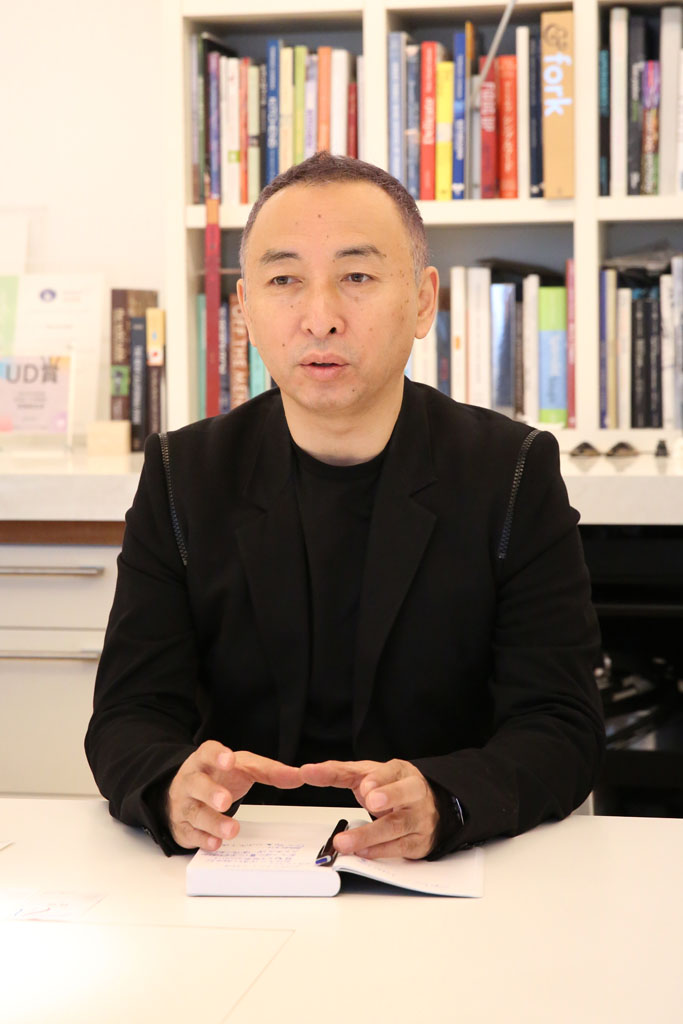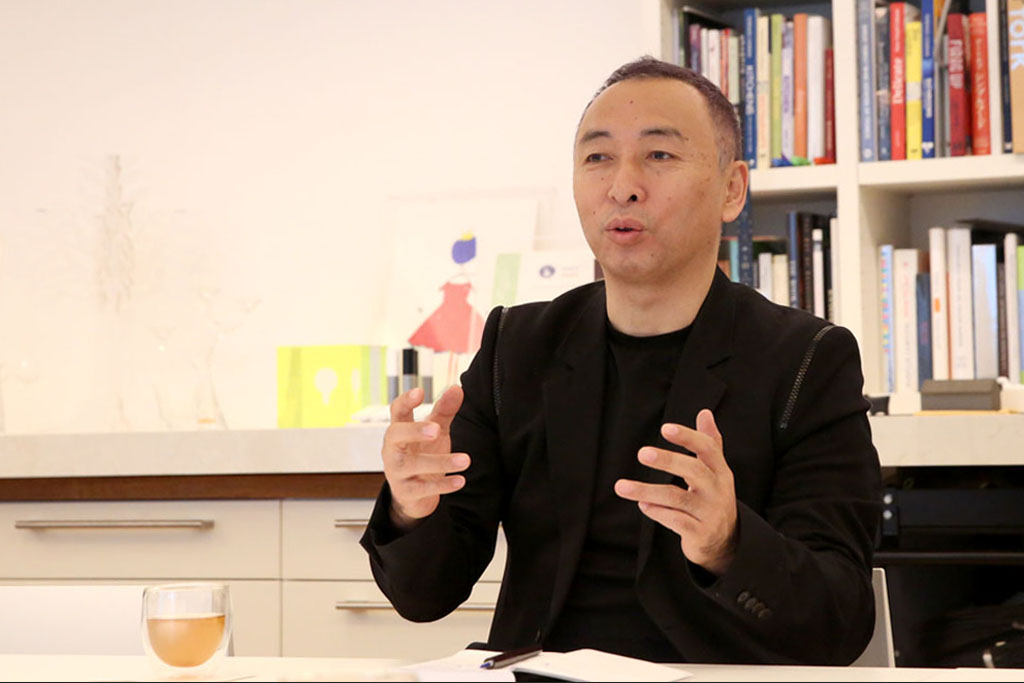
【LIGHTDESIGN INC.】 Interview with a lighting designer Hiroyasu Shoji
Mr. Hiroyasu Shoji. - A lighting designer working internationally and also the representative director of LIGHTDESIGN INC. He is the “Sommelier of Light," who has long been pursuing the essence of lighting. We have asked about his childhood episode that lead him into lighting design and various details about his work. The second half of the interview covers his growing passion towards lighting and its possibilities, through his experience with the Great East Japan Earthquake and his visit to the light-less island.
Could you tell us about your childhood and how you got interested in the field of architecture?
Hiroyasu Shoji (Shoji)I spent my childhood in the countryside of Fukushima prefecture, but due to my father's job relocations, I transferred schools 5 times during my elementary and middle school years. We've never settled down in a single location, but I felt proud always being the "new student." During my middle school days, my father got a brand new house built. Watching the architects work up-close, I was drawn into architecture. From those days, I really had fun drawing stuff like simple floor plans. When the time came for me to move on to university, I got enrolled in the Kogakuin University's architecture department.
Tell us about how you started working in the field of architectural lighting.
ShojiI realized the difficulty of working in the field of architecture while studying at the university. As I started to figure out how I can become a successful architect, I thought that I didn't possess the ideal conditions. For example, the family lineage. I found out that prominent architects were mainly from well-known families. These individuals, using their family connections, were able to get job opportunities early in their career and gained work experience. But unfortunately, I wasn't in such circumstance. Then I thought, "I can become an architect with different benefits," and that's when I got into architectural lighting. By bringing in the lighting aspect to architecture, which I have been studying, I felt like I was in a new world. That experience brought me to this point.
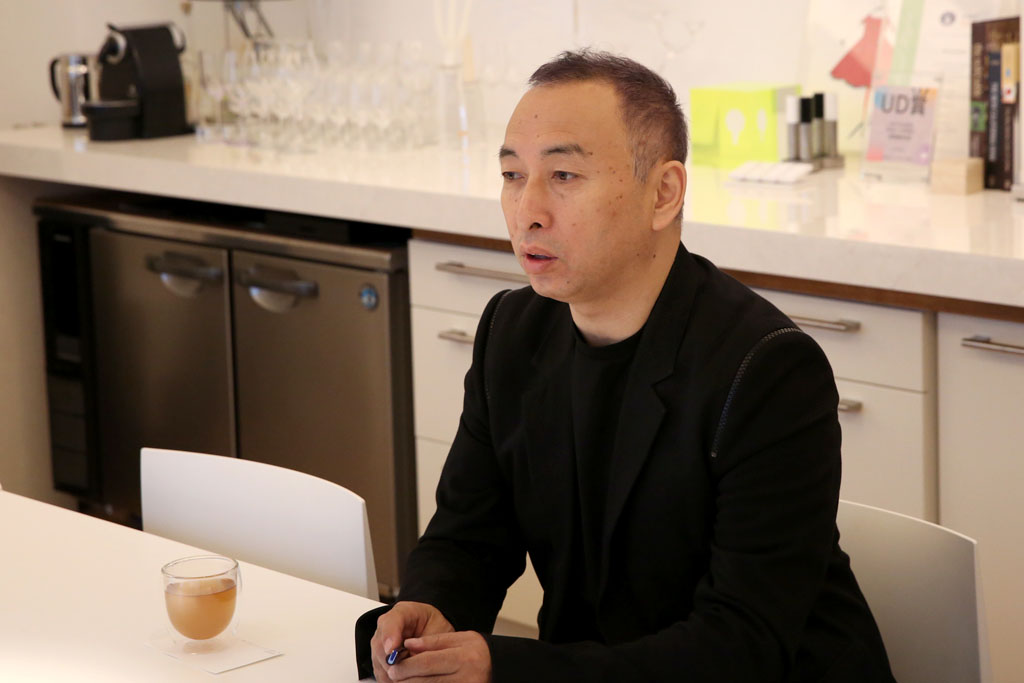
How has your encounter with architectural lighting formed you as a lighting designer?
ShojiMy first encounter with it was in a magazine article about Shinjuku NS Building incorporating architectural lighting. I was strongly impressed by the featured article and decided to work in the company that was involved in the lighting design, TL Yamagiwa Laboratory. At the time, I didn't have any knowledge nor skills of architectural lighting, so I had to come up with a way to get their attention in order to get hired. As a result, I wrote down my passion to work at the company, with a brush, on a 3 meter long scroll and sent it to them. Later, I visited the company several times, received an interview and got hired. After working in TL Yamagiwa Laboratory for 7 years, I renounced my position and started working in Lighting Planners Associates.
What made you join Lighting Planners Associates?
ShojiMr. Kaoru Mende, my boss at TL Yamagiwa Laboratory, was leaving the company at the time, so I followed him. Although we were able to design, there were many restrictions, as we were working for a corporation. I thought by becoming independent, we can realize the true nature of a light designer "to create a design that won't be restricted by any limitation of capital." That's the reason why I followed him.
Do such determination and action arise from your personality, experience or confidence?
ShojiIt's more from my personal assumption and instinct than confidence. Basically, when I decide on something, I take action. It could be the wrong decision but then I can always go back. Actually, I wasn't so decisive when I was a kid. Back then, I was a little hesitant.. Maybe, I have gotten bolder, transferring to different schools during my middle school years. The first day you show up in the new class was crucial. The experience of trying to present myself in front of a new crowd, in a new environment, may have worked out well.
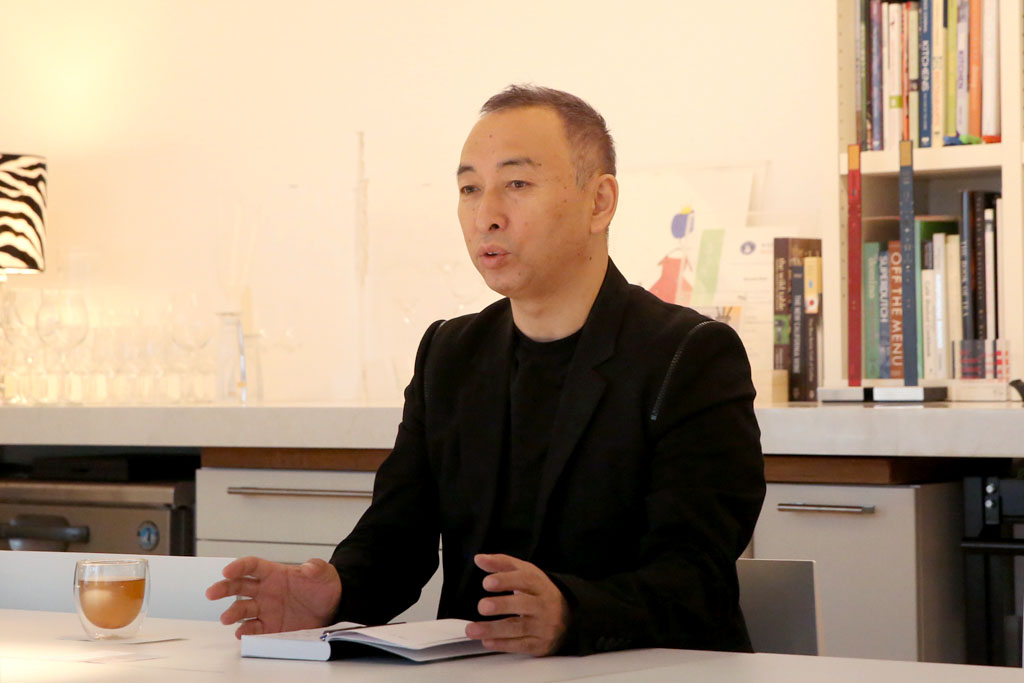
Could you tell us how many contracts you receive during a year and how they run?
ShojiWe contract approximately 20 projects per year. It's in the field of architecture, so we have project that runs for 2-3 years, and we are working in an environment where approximately 50 projects are running simultaneously. We are involved from the architectural and landscape design phase in most of the projects, so not only do we install light fixtures to existing buildings, but we even decide the materials of the walls with out clients. The project begins with the architect describing the project overview. From there we begin proposing our ideas of the lighting design. And in order for us to get the exact image, we sketch them out on paper, or project the lighting on models for verification. As a result, we present the specification and placement plans for the light fixtures, and also adding the luminance calculation report on the list; with some on-site testing and final adjustments the project is completed. Sometimes, the conditions are changed during the process, so we constantly verify things as we move forward.
What's the reason behind giving lectures at schools even with your busy work schedule?
ShojiWhen I first began working at TL Yamagiwa Laboratory, one senior colleague who interviewed me said, "We are the missionaries of light." I was surprised by his words, since "missionaries" are these honorable people in the past and I felt that they weren't part of our everyday world. Those words have stuck in my mind to this day, and I feel that it'll be wonderful to be able to communicate the beauty of light in my lectures. I look forward to the development of amazing and unique new talents who can illuminate this world.
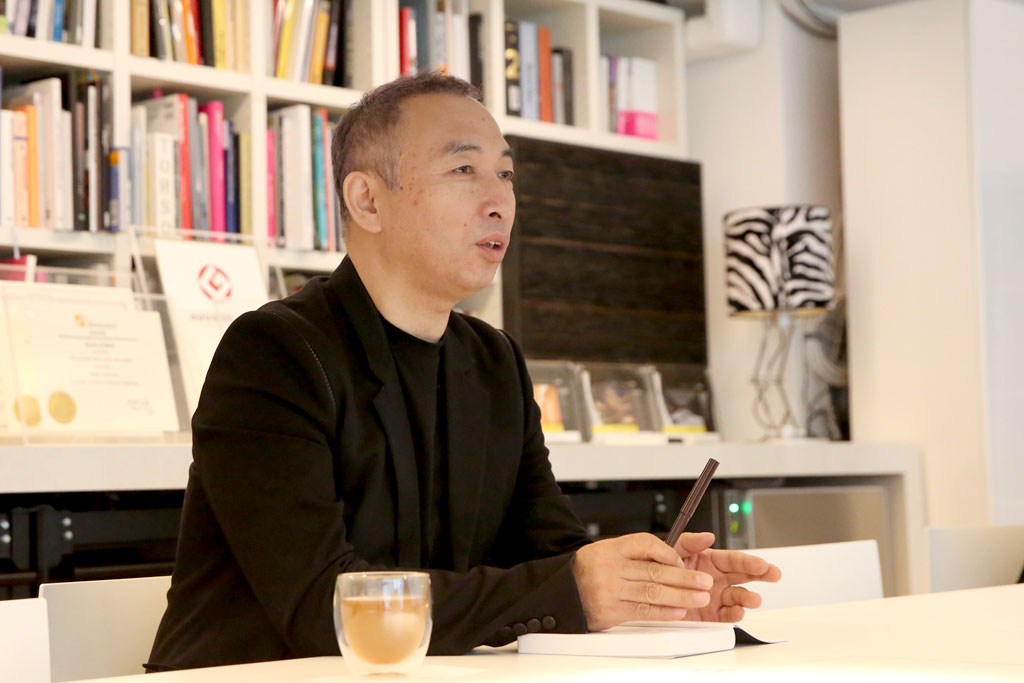
Has the 2011 disaster had an impact on your lighting design or on your personal views?
ShojiOf course, I was deeply hurt. I questioned whether we were wasting too much electricity to do our jobs, and whether such job was necessary in this world after all. However, I was forced to reflect on the importance of lighting as a result of the black out, which gave me the opportunity to reconfigure my concept of lighting. Moreover, up until then, most people thought of lights as things to brighten dark places, but they soon began to observe the darkness after the disaster. Darkness is not something negative but it's something very comforting. After the disaster, I joined this project for a NHK TV program called, "The Power of Traveling," and I visited an island without electricity in Papua New Guinea. There I encountered these fascinating lights of fireflies and the sunset. And at night, the locals would extract oil from coconuts to light a lamp, which gave off this gentle light. Looking at the island-chief's face lit by a light of only 0.11 lux, I asked, "What is lighting to the people on this island?” He answered, "Light is the symbol of life. As a proof that we have passed the day safely, we light our lamps. If we spot a house without lights, we get worried and hurry towards it." It was an answer I didn't expect and I had difficulty holding back my tears. I have forgotten a very important thing. It was a precious trip that allowed me to contemplate on lighting, at the time when I was agonizing over the disaster.
In short, what does "light" mean to you?
ShojiLight is "the proof of life."
Biography
LIGHTDESIGN INC. (http://www.lightdesign.jp/)
Hiroyasu Shoji
Light Designer
International Light Designer
Member of "International Association of Lighting Designers Professional"
Born in 1958.
Graduated from Kogakuin University with a Master's degree in architecture.
He gets interested in the relationship between light and architectural space and he changes his path from architectural design to lighting design. From 1990, he embarks on an exploratory journey around the world to find inspirational lights. From the Alaskan aurora to the Saharan moonlight, he continues to report about beautiful lights. Using inspiration derived from his encounters with lights, he designs the lighting of various places: skyscraper facades, museums, libraries, commercial spaces, and dining spaces as restaurants and bars. Award of Excellence, Special Citation (International Association of Lighting Designers), Award of Merit (Illuminating Engineering Society of North America), Good Design Award (Japan Institute of Design Promotion), and other numerous awards.
Publications
"Delicious Lighting" (TOTO Shuppan) \2200
Includes 40 easy and fun instructions of lighting design for everyone. From simple lighting to lighting for enthusiasts, this book presents the difficulty level, function, cost, preparation time, and lighting source types, each with an icon and a simple explanation. The names of the products and their distributors are listed, so anybody can apply their lighting techniques in their daily lives with this practical book.
Other publications including his books, co-authored books, and serial books.
"Hikari no Sommelier・Premier." (LIGHTDESIGN INC.)
"Nihon No Shoumei wa Mabushisugiru."(Kadokawa one thema 21)
"Delicious Lighting." (TOTO Shuppan)
"Uruoi Lighting" - Hikari wa Tsukaikonasu Mono. (Kyodo-Tsushin-Sha)
"Minna no Sumai" - Hikari no Sommelier. (Mitsui-Fudosan-Residential)
"Shin Kenchiku Jyutaku Tokushu" - Akari no Iroha. (Shin-Kenchiku-Sha)
"Hikari to Iro no Kankyo Design." (Ohm-Sha)
"Toshi Kankyo Design no Shigoto." (Gakugei-Shuppan-Sha)
"20-21SeikiDESIGNINDEX" - Lighting Design. (INAX Shuppan)
"Buppanten no Shoumei Keikaku." (Shoten-Kenchiku-Sha)
"Inshokuten No Shoumei-keikaku." (Shoten-Kenchiku-Sha)

